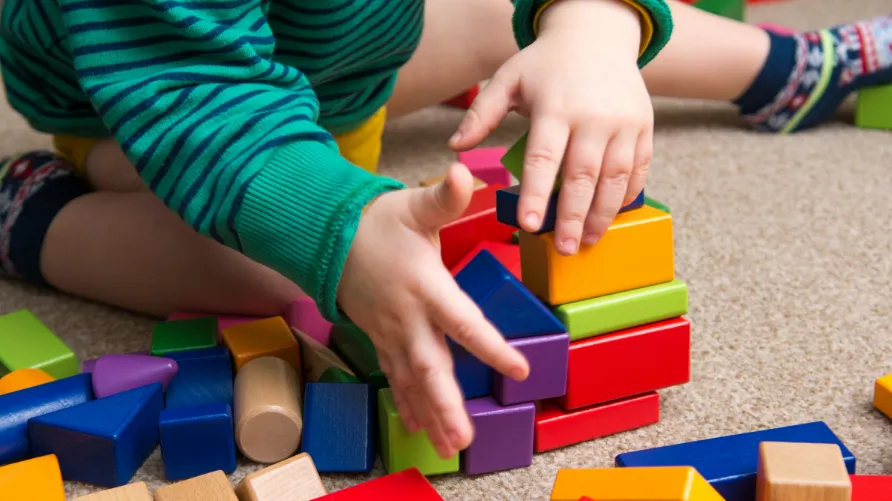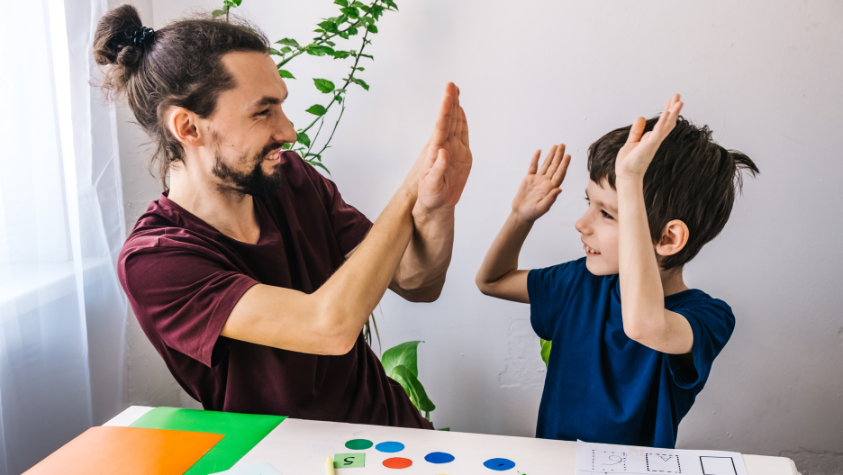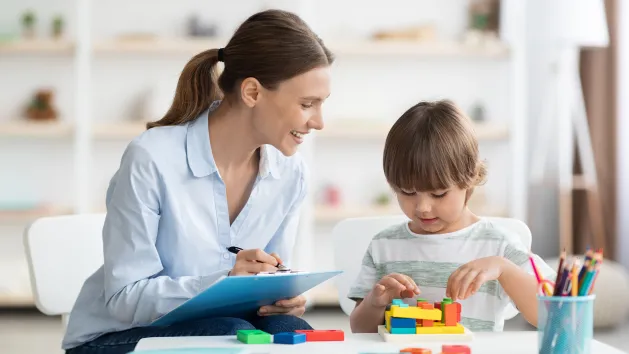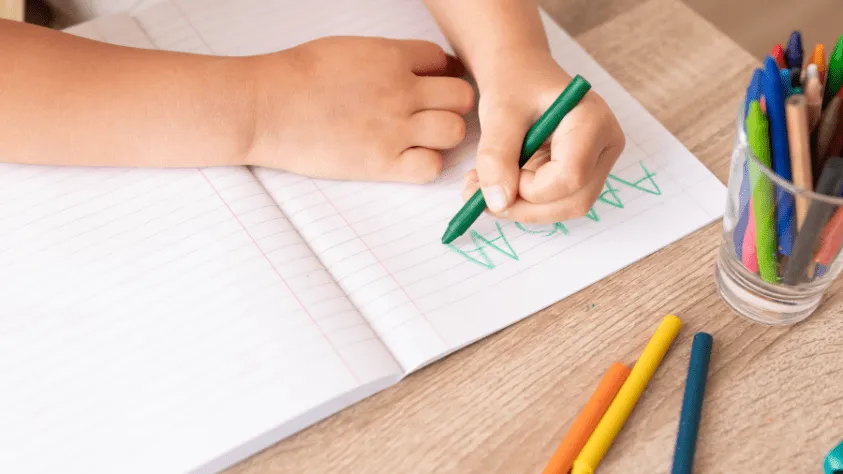
What does an ADHD child need and how can they be helped at home?

After noticing signs of inattention, impulsivity and even hyperactivity in your child, you have decided to consult a specialist to find out whether or not your child has Attention Deficit Disorder with or without Hyperactivity (ADHD).
The diagnosis by the child psychiatrist or neuropaediatrician is positive and you’re worried? Don’t panic, your little one has superpowers! But to help him make the most of them and live a calmer everyday life, here are a few practical tips to adopt. Babaoo Mag has the facts for you! 💡
Understanding the challenges he faces to help him better
ADHD, or Attention Deficit Disorder with or without Hyperactivity, is a neurodevelopmental disorder that can affect a child’s behaviour, learning and social relationships. With a brain that’s firing on all cylinders and brimming with ideas, your little protege is likely to struggle to stay focused, rarely finishing a project he or she has just started, and unable to get organised.
This list is by no means exhaustive, but these common symptoms of ADHD affect their daily lives and, if left unchecked, can have a detrimental effect on their development (and yours too! 😅). But in practical terms, what challenges does your child face and how can you help?
Organisation and time management
Children with ADHD often have difficulty managing their time and finding their way through the different activities of the day. You may recognise your son or daughter who takes nearly two hours every morning to wash, dress and eat breakfast, so many of these steps are interspersed with moments of distraction and wandering off.
Getting lost in their thoughts while brushing their teeth, getting distracted by an unimportant detail between two spoonfuls of cereal or trying out ever more daring knots when it comes to tying their shoes… Our little artists have no shortage of imagination! And if you were hoping to get to school on time, you’re in trouble! Although…
Tip 1: Establish routines
Routines and procedures generally help children with ADHD to focus less. By sequencing activities into clear, structured micro-tasks, you provide your child with a predictable and reassuring framework so that they know what you expect of them. Draw up a standard timetable covering the key activities of the day, such as getting up, eating, homework, playtime and bedtime.
Tip 2: Use visual planning tools
For even greater efficiency, don’t hesitate to use visual reminders to help them plan their activities: a timeline, to-do lists or a wall calendar with pictures and colour codes will help them visualise the tasks to be carried out and in what order.
Tip 3: Break down tasks
ADHD and activities presented in their entirety don’t mix! By breaking them down into more manageable micro-tasks, the process seems less overwhelming and more manageable.
For example, rather than asking him to do his homework, break down this block of activities into short, very concrete actions so that he can concentrate on one step at a time:
- Make yourself comfortable at your desk so you can relax.
- Consult your class diary.
- Get out your notebooks and the necessary materials.
- Start with the first question, reading the statement and instructions carefully.
- Think about the answer, then write it down.
- Reread what you have written to check that you have been clear and precise enough.
- Go on to the next question, repeating this process.
The same goes for tidying his room:
- Start by collecting all the clothes you have lying around.
- Sort those that need to be put away from those that need to be washed.
- Gather your toys and put them in the cupboard.
- Put the books on the shelf, separating the comics.
- Admire the result!
✏ Baba’Tips: the use of a stopwatch ⏱ or a small hourglass ⏳ can also help him better grasp the concept of time and remind him to move from one activity to another while adding a playful touch to the tasks in hand.
Inattention and concentration problems
Concentration problems are one of the most common warning signs in children with ADHD. Their tendency to be easily distracted has a significant impact on their daily and social lives, as well as on their learning. Here are a few tips to boost your child’s concentration.
Tip 1: Create an environment conducive to concentration
The first step to boosting your child’s concentration is to create a calm, orderly environment in which they can stay focused on their activities. When they’re doing their homework or DIY, for example, put them at a desk that’s organised and tidy, leaving only the materials they need for their activity.
Next, take care to eliminate any source of distraction likely to distract his attention:
- Choose a space away from the hustle and bustle of the house.
- Reduce background noise and visual stimuli that could distract them as much as possible: turn off the radio, close the blinds and turn off the television.
- Is your home one of those where there’s never a dull moment? 🥁 If so, don’t hesitate to use noise-cancelling headphones.
Tip no. 2: encourage interest and motivation
They always say it’s easier to stay focused when you’re doing something you enjoy. It’s hard to distract yourself when you’re reading your favourite detective novel or devouring a crossword puzzle, isn’t it? Your little wolf is no exception to the rule.
He has to learn to count but can’t seem to stay involved? What if the dinosaurs he’s so keen on were your best allies? If “1 + 2 + 3” doesn’t inspire him, “1 T-Rex + 2 Triceratops + 3 Pterodactyls” will certainly pique his interest and keep his concentration. 🦖
Generally speaking, used as an anchor, games can involve your child in their learning, ADHD or not.
Tip no. 3: Plan recurring breaks
Given their difficulty in remaining focused for long periods, it’s crucial to plan regular breaks that allow children with ADHD to let off steam… and recharge their batteries. 🔋
✏ Baba’Tips: rather than one long break, opt for several short breaks so that your little one can relax at regular intervals, disconnecting temporarily from the task he/she is doing and then refocusing. Psst: outside is even better! 🌿
Self-esteem and emotional well-being
It’s not unusual for a child with ADHD to feel different, unable to conform to expectations or succeed like the others. Under these conditions, it’s difficult to have self-confidence and believe in one’s abilities… It’s up to you!
Tip 1: Show empathy
Your little protégé undoubtedly makes considerable efforts on a daily basis. However, if you don’t put yourself in his shoes to better understand the disorder he’s living with, these efforts may go unnoticed, reinforcing his feelings of failure and inferiority.
As a parent, you are his pillar. Understand his challenges and show your support by listening to his concerns and encouraging him.
Tip No. 2: Celebrate successes, even small ones!
The disorder he’s living with has nothing to do with his intelligence. Remind him of this and continually implement a strategy of positive reinforcement. Leave aside what’s not going so well and praise him for every effort he makes and every step he takes.
✏ Baba’Tips: the reward period is also very important. Do you notice any progress? No matter how small, don’t wait to say “BRAVO”! 👏
Tip no. 3: Help them to get to know themselves better
An adult with ADHD generally lives better with this disorder than a child. Why is that? The answer is simple: with time, they get to know themselves better and know what strategy(ies) to put in place to limit the impact.
Help your child to understand how he or she works and to identify his or her strengths and weaknesses. This will enable them to adapt and overcome any obstacles they encounter with greater serenity.
Babaoo recap!
- Your child has been diagnosed with ADHD. Even if this in no way calls into question their abilities or intelligence, they will potentially be faced with challenges in terms of time management, concentration and self-esteem.
- Don’t panic! There are some simple tips to help them meet these challenges:
If they have difficulty organising and managing their time, you can, for example, introduce routines, use visual planning tools or break down their activities into micro-tasks that are easier to tackle. - Is your little protégé bursting with ideas but unable to concentrate? Create an environment that encourages concentration. Spark their interest and plan regular breaks to help them focus their attention.
- To boost their self-confidence, be understanding. Celebrate their successes and help them to get to know themselves better so that they can put in place appropriate coping strategies.
Of course, every child with ADHD is unique. To help them flourish, understand how they see the world and punctuate their daily routine with simple habits that will make all the difference. ✅
✏ Note: are you a parent, teacher or remedial professional? Find out all our advice on the article “How to support a child with ADHD at school“.
You may also be interested in these articles


